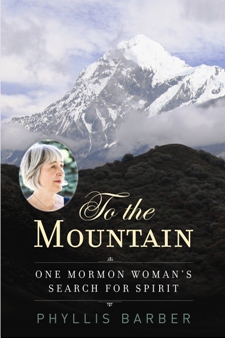BOOKS
TO THE MOUNTAIN: ONE MORMON WOMAN'S SEARCH FOR SPIRIT, Quest Books, Wheaton, Illinois, May, 2014 (forthcoming in May 2014)
The prize-winning author's Mormonism and literary prose distinguish this book among spiritual memoirs. In a series of thought-provoking, personal essays, Phyllis Barber provides an engaging account of how she left her original Mormon faith and eventually returned to it decades later. Her journey began in the 1990s. In search of spiritual healing and a deeper understanding of the Divine, she traveled widely and participated with people of many different persuasions, including Southern Baptists (both African-American and Caucasian); Tibetan Buddhist monks in Tibet and North India; shamans in Peru and Ecuador; goddess worshipers in the Yucatan; and members of mega-church congregations, an Islamic society, and Gurdjieff study groups. Along the way she discovered the ancient wisdom preserved by religions and spiritual practices around the world and the parallel life we all live with the Unseen. Her twenty-year hiatus from Mormonism transformed her in powerful ways. When she decided to return to her original religion, she was a much different human being and more of a mystic than someone given to a particular dogma. Her clarity and unflinching honesty will encourage others to continue their own personal odysseys.
Excerpt from the Prologue: "Searching for Spirit:"
"May thy Spirit be with and guide us this day." ---a phrase from my childhood's family prayer
Ever since I fell off the precipice of knowing, I've been searching for places where Spirit resides---those ineffable places where I feel connected to others, to nature, and to the ethereal. I find that as I've given up trying to file answers in my "I Know" box, I more than ever before want to capture the essence of Spirit and keep it in a cricket basket where it can breathe, yet be examined. Yet I know that captivity is folly. If one pursues Spirit with determination and a basket, it turns away. It recedes. It hides.
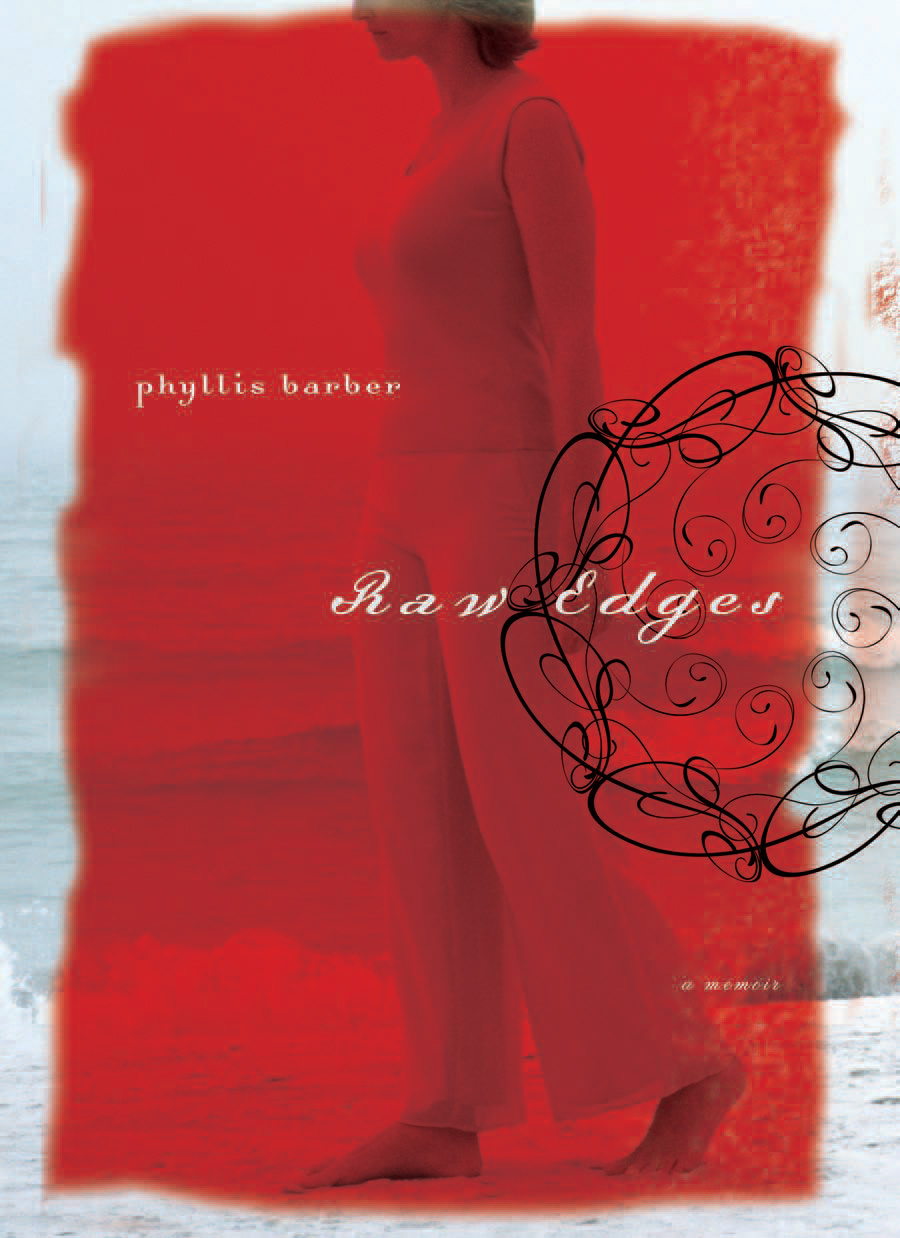 RAW EDGES: A MEMOIR, University of Nevada Press, Reno, Nevada, March, 2010
RAW EDGES: A MEMOIR, University of Nevada Press, Reno, Nevada, March, 2010
RAW EDGES is a coming-of-age-in-middle-age book about believing one has the world put together, about finding out that one does not, about losing one's innocence and falling apart, and then about discovering a way to put the pieces back together again. It is a story of guilt and shame and the triumph in accepting the holiness of one's sacred journey, however winding the path.
Selected as one of the Outstanding University Press Books of 2010 by Foreword Reviews
Excerpt from the Prologue:
The folded-tissue ballerinas hang suspended from the mobile tacked to the ceiling above my desk. The dancers twirl, on impulse it seems, but they’re being put into action by currents of heat from the fireplace. It’s cold outside. They seem to be urging me to action. Put a word on the computer screen. Two words. Three. You need to finish your book. They pirouette on strings.
Maybe, I think as I look at the white screen in front of me, most everyone talks of writing the story of his or her life someday. I suspect this has to do with a secret hope that someone, somewhere, will read their words, be moved, enchanted or, better yet, assisted on the journey through the mine fields of life.
Maybe, I think as the green tissue dancer twirls counter to the direction she’s been turning, writing a book is about leaving a trace. Maybe it’s about gathering disparate pieces into a puzzle. Or maybe it’s about wanting to be understood. St. Francis of Assisi, once said: “Seek not to be understood but to understand.” I confess I’d like to be understood, if by no one else but myself.
************
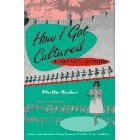 HOW I GOT CULTURED: A NEVADA MEMOIR, University of Georgia Press, Athens, Georgia, 1992, hardcover; University of Nevada Press, Reno, Nevada, 1994, paperback
HOW I GOT CULTURED: A NEVADA MEMOIR, University of Georgia Press, Athens, Georgia, 1992, hardcover; University of Nevada Press, Reno, Nevada, 1994, paperback
HOW I GOT CULTURED is an absorbing, often comic, always vivid account of a childhood torn between the demands of a strict Mormon household and the enticements of a thoroughly secular world. Set in the 1940s and 1950s, Phyllis Barber's narrative recalls her early search for any token of artistic and social significance that might survive the demands of her circumscribed home life. In her search for a culture larger and freer than that provided by her religion, there is a compassion, an illuminating tenderness in her remembering.
- Winner of Associated Writing Program Award Series Prize in Creative Nonfiction, 1991
- Association for Mormon Letters: Award in Autobiography, 1993
- Listed as one of top five books about Las Vegas in editor’s list of “The Best Books About Sin City,” Las Vegas MERCURY, September 7-13, 2001
- NBC - TODAY Show, April 1997, featuring author and HOW I GOT CULTURED: A NEVADA MEMOIR
- Distinguished Western Story Award (1992) for “At the Talent Show,” first appearing in “The Missouri Review,” BEST OF THE WEST, W. W. Norton, New York
- Named one of the top five books written about Las Vegas by thebrowser.com, 2012
Anthologized in:
- AFTER THE BELL: Contemporary American Prose about School, Maggie Anderson and David Hassler, eds., University of Iowa Press, 2007 (excerpt from “Mama Piranha”)
- THE FOURTH GENRE: Contemporary Writers of/on Creative Nonfiction, Robert L. Root, Jr. And Michael Steinberg, eds., Simon and Schuster/Allyn & Bacon, 1998 (“Oh Say Can You See?”)
- FRAME WORK: Culture, Storytelling, and College Writing, Gary Colombo/Bonnie Lisle/Sandra Mano, eds., Bedford Books, Boston 1997 (“Stories”)
- LITERARY LAS VEGAS: The Best Writing about America’s Most Fabulous City, Henry Holt, New York City, Spring 1995 (excerpts)
- BRIGHT ANGELS AND FAMILIARS, Signature Books, Salt Lake City, Utah, Fall, 1992 (“At the Talent Show”)
- CHRISTMAS FOR THE WORLD, Aspen Books, Salt Lake City, Utah, December 1991 (“Stories”)
Excerpt from “Fremont Street” in HOW I GOT CULTURED: A NEVADA MEMOIR:
. . . .as I walked along the concrete sidewalk lining Fremont Street, I imagined tables surrounded by men with slicked-back hair, standing at the tables forever until they were covered with cobwebs and their pointed fox faces stiffened with frost. Yet they still rolled the dice to decide who would be lucky or unlucky, who would win or who would lose, even though they suspected the decision was made before dice were invented.
If you’ve ever been to Las Vegas, you’ve been to Fremont Street. You’ve seen the flashing lights that hide the simple lines of the asphalt street, the fact that the street begins and then ends, the fact that no one ever stays there. You know it’s only a street to walk on until you reach the doors that open in, then open out again. You know it’s a black ribbon of asphalt rolled out on the desert floor until it passes through a bouquet of brilliant flowering lights which attract the honeybees and you and me. You sniff its scent, want to hold it in your nostrils like cigarette smoke.
But you know you’re walking into a daylily in reverse, still open at night, inviting you to sniff its perfume. And you know when a flower never closes, it isn’t a flower. It’s only Fremont Street.
************
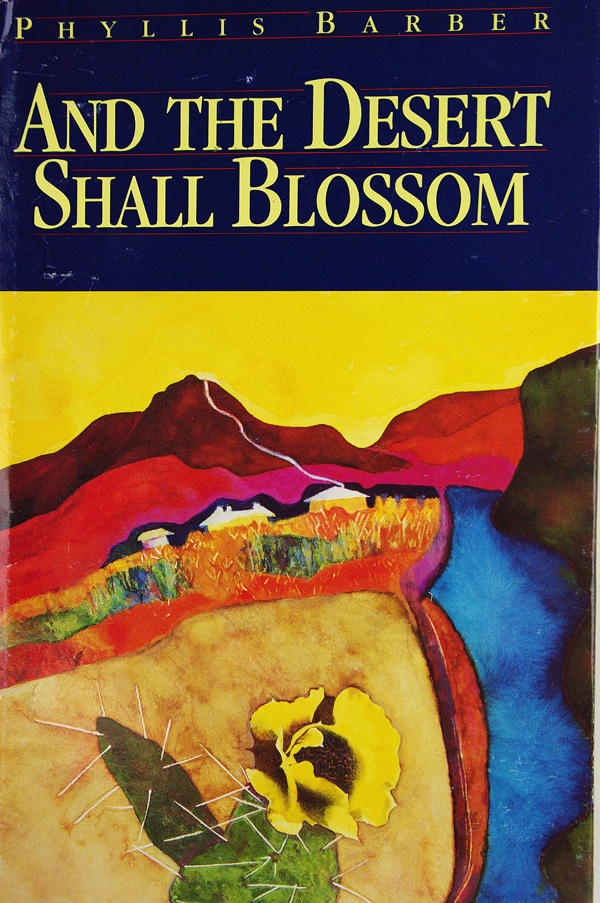
AND THE DESERT SHALL BLOSSOM (novel),
University of Utah Press, Salt Lake City, Utah, 1991
Signature Press, Salt Lake City, Utah, 1993, paperback
This is a novel about the building of the Hoover Dam in the 1930s, the taming of the Colorado River, and about a family struggling to survive through the Great Depression after finding a tenuous place for themselves in southern Nevada and in the extremely barren and unforgiving Mojave Desert. In juxtaposing the story of a woman's soul against a bold account of one of history's most monumental engineering projects, Phyllis Barber has augered deep into a monumental truth about humankind. How frail we are, and thus, how utterly heroic.
- First Prize, Utah Fine Arts Literary Competition, 1998
- Utah Endowment for the Humanities Library Series, AND THE DESERT SHALL BLOSSOM featured at Library Discussion Groups in Utah and Wyoming, 1993 - 1998
Excerpt:
One drop of water. That’s how the Colorado River began. The drop escaped from a crust of snow and fell to the frozen ground where it quivered, as if it were a liquid jewel. Other drops followed until a mountain niche was filled to overflowing.
Timidly, the water trickled over the edge, then gained momentum until it rushed over cliffs and sprayed the air. It swirled and leapt and gathered strength until one day, Lieutenant Cardenas and his men, the first Spanish explorers, peered over the lip of a canyon and watched this water churning like a devil’s belly far below. The conquistadores knelt, crossed themselves, then turned back to warn others away from the river none could possess.
Many tried to cross, and many failed until Father Silvestre Vélez de Escalante’s leather boots squished the soft clay of the river’s bank as he paced back and forth, waiting for slow water time. He barely survived at El Vado de los Padres, but his accomplishment gave other men ideas.
************
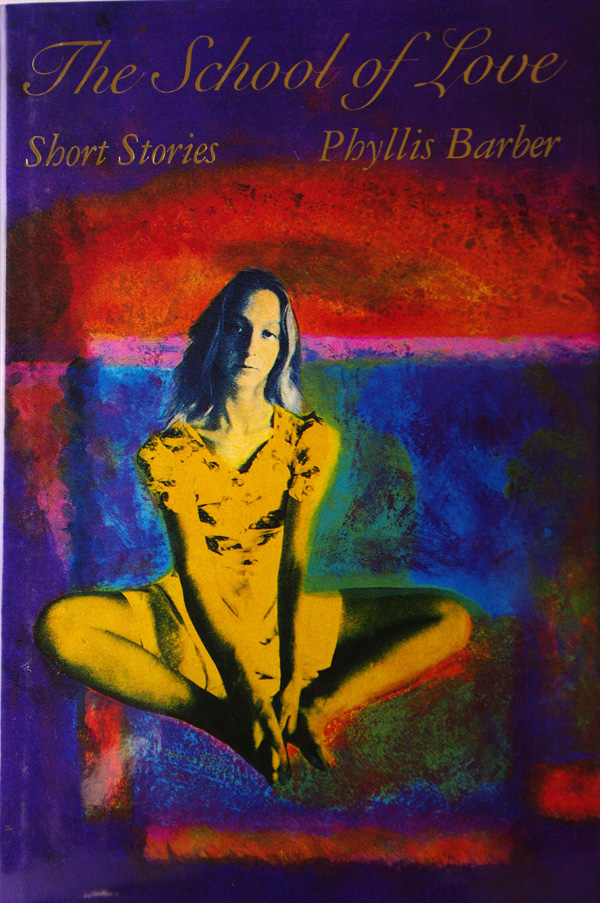 THE SCHOOL OF LOVE (short stories), University of Utah Press, Salt Lake City, Utah 1990
THE SCHOOL OF LOVE (short stories), University of Utah Press, Salt Lake City, Utah 1990
"Love isn't just about lighting candles and holding hands," says Phyllis Barber. "People have to part to come together again. Ultimately, love is an acceptance of all aspects of being human, which includes the foibles and strengths in one's self and one's loves. And it happens in a slow movement toward wholeness rather than in an immediate realization of idealized perfection"
Each of the stories in The School of Love reflects effort by characters to find ways to love. Some argue to keep their shared passion alive; others love trees---too late; a woman holds on to a vain image of herself as an object for others to love; another trusts in justice, not mercy, to find love.
These dreamy stories speak from beneath the surface of language and do not yield themselves to the conscious mind. They are like best friends, who reveal themselves a bit at a time. They are to be read and savored carefully, as they were written.
- First Prize for “Criminal Justice,” (single story), Utah Fine Arts Literary Competition, 1988
- Distinguished Western Story Award (1989) for “Criminal Justice,” first appearing in “Crosscurrents,” BEST OF THE WEST 3, Peregrine Smith Books, Layton, Utah
Anthologized in:
- A GREAT AND PECULIAR BEAUTY: A Utah Reader, Thomas Lyon and Terry Tempest Williams, eds., Gibbs Smith, Salt lake City, Utah 1995 by Utah Centennial Anthology Project (“Criminal Justice”)
- FICTION: CROSSCURRENTS’BEST, Crosscurrents, Los Angeles, CA, July 1994 (“Criminal Justice”)
Excerpt from “Almost Magnificence” in THE SCHOOL OF LOVE:
She had been magnificent, almost. But now, trouble was, she leaked at the edges. Maybe somebody hadn’t sewn the seams straight enough. God’s sawdust doll, dripping flakes of sawdust.
For a while, concerned about the litter, God hired somebody to follow her around with a whisk broom, but that proved a full-time job and people had their own responsibilities. So God said, “Gee whiz, you’ll have to take it from here, honey. I’ve got a lot to do. More dolls to make.” So she just leaked around town, incrementally.
************
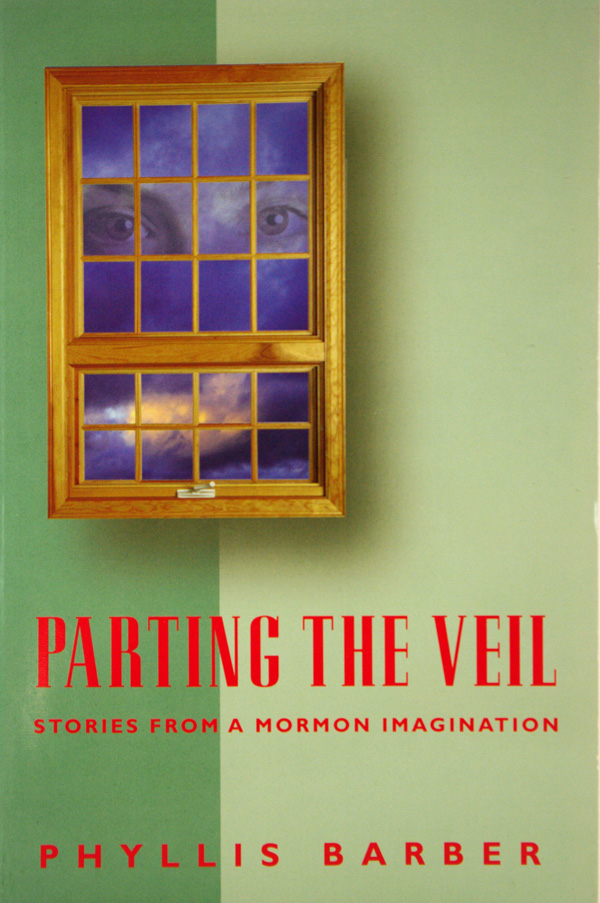 PARTING THE VEIL: STORIES FROM A MORMON IMAGINATION, Signature Press, Salt Lake City, Utah, 1999
PARTING THE VEIL: STORIES FROM A MORMON IMAGINATION, Signature Press, Salt Lake City, Utah, 1999
Phyllis Barber writes about miracles, premonitions, visits from our dearly departed, and the sometimes angst of good church-going people. These twelve short stories are based on tales overheard at church, newspaper accounts, and stories from the Fife Folklore Collection at Utah State University, Latter-day Saint publications, and family records. Some have passed from generation to generation. All, of course, are true.
- First Prize for “Mormon Levis,” the Sunstone D.K. and Brookie Brown Short Story Contest, 1997
- Pushcart Prize XIII (1988), Special Mention for “Wild Sage”
- Second Prize for “The Fiddler and the Wolf,” the Sunstone D.K. and Brookie Brown Short Story Contest, 1993
- Second Prize for “The Whip,” Utah Fine Arts Literary Competition, 1986
- Second Prize for “Ida’s Sabbath,” the Sunstone D.K. and Brookie Brown Short Story Contest, 1983
Anthologized in:
- LITERARY NEVADA: Writings from the Silver State, Cheryll Glotfelty, ed., University of Nevada Press, 2008 (“Mormon Levis”)
- THE RIVER UNDERGROUND: An Anthology of Nevada Fiction, Shaun T. Griffin, ed., University of Nevada Press, 2001 (“Mormon Levis”)
- IN OUR LOVELY DESERET, Robert Raleigh, Ed., Signature Books, Salt Lake City, Utah, 1998 (“Spirit Babies”)
- WALKING THE TWILIGHT II: Women Writers of the Southwest, Kathryn Wilder, ed., Northland Publishing, Flagstaff, Arizona, 1996 (“Spirit Babies”)
Excerpt from “The Fiddler and the Wolf” in PARTING THE VEIL: STORIES FROM A MORMON IMAGINATION
If only Old Dowdy had been quicker with his chores, he wouldn’t be lost in this mucky fog and the twilight. But he’d dallied after milking his cow Hannah, hoping she’d talk back to him. He’d tickled her ear, fed her extra hay, even told tall tales, but all the cow said was “Feed me” and “Milk me” with the one sound that never failed her.
As he traipsed deeper into the less familiar territory beyond his fence line, Old Dowdy rehashed his theory that cows weren’t as dumb as everyone said. They had cow wisdom, he insisted to his friends and his wife, Estrella. “Even the prophet,” he told them, “gave a sermon saying animals had souls, just like humans.” Dowdy wasn’t just whistling up a crooked tree.
But, at this moment, he was lost in a porridge fog in his red and tightly buttoned lumberman’s jacket, his brown knitted gloves, and his sheepskin-lined cap pulled down to his eyebrows. At this moment he regretted his theories about cows and everything else. Carrying his fiddle under his arm and wearing snowshoes made from strips of deer hide and steam-bent aspen, he started one way, then another, trying to find something familiar in the soupy fog.
************
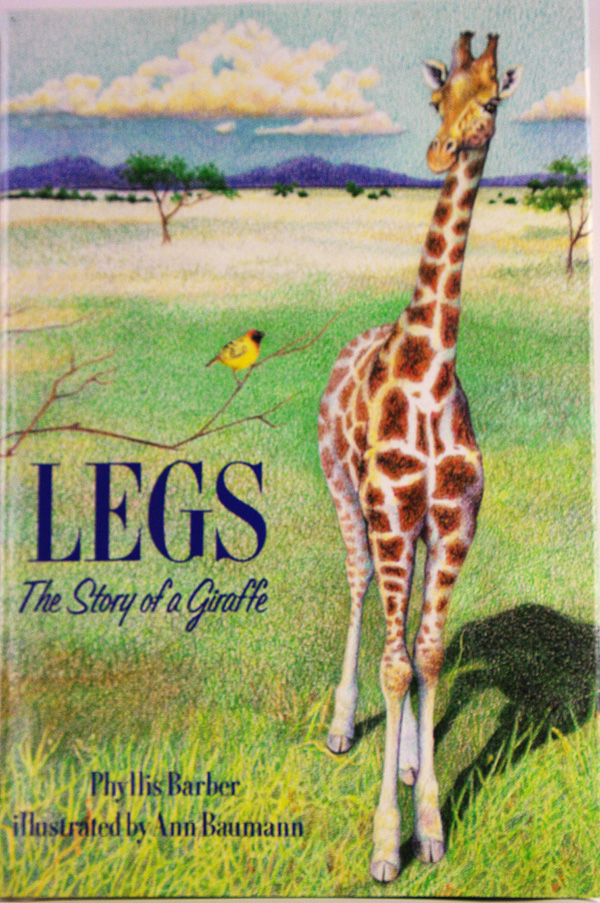 LEGS: THE STORY OF A GIRAFFE (juvenile), McElderry/Macmillan, New York City, 1991
LEGS: THE STORY OF A GIRAFFE (juvenile), McElderry/Macmillan, New York City, 1991
Illustrated throughout with lovely, evocative drawings, this book, which is based on a true incident, gives a fascinating picture of a giraffe's life in the wild and in captivity. Young readers will be deeply moved by this gentle and authentic story about one of the most beautiful wild animals on earth.
Excerpt:
One evening, in the land of Kenya, clouds crowded across the horizon and the face of the setting sun. But a sudden wind blew holes in the clouds and sunlight shone through like two large eyes. This was the moment when Imburugutu, a giraffe, was born. His name meant “long neck and sticking-up ears.
Eight giraffe cows gathered in a circle around his mother. Like lookout towers, they stood very still, watching the tall grasses surrounding them. If the grasses bent to one side, a hungry lion might be prowling there. The cows were constant sentries, except for one important moment: the moment when Imburugutu unfolded into the world.
First his forelegs came out of his mother. Then his head, all wrapped in a silky sack of membrane. After the cows saw that the new arrival would be all right, they quickly turned again to watch the movement of the grass. They knew simba the lion liked a tender meal, one that didn’t know how to fight back.
************
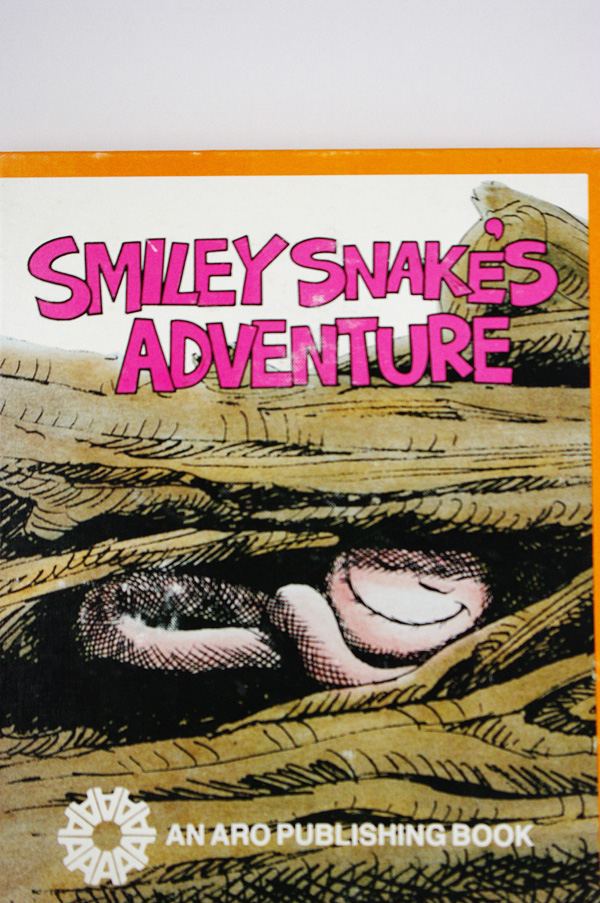 SMILEY SNAKE’S ADVENTURE (a juvenile easy reader), Aro Press, Provo, Utah 1980
SMILEY SNAKE’S ADVENTURE (a juvenile easy reader), Aro Press, Provo, Utah 1980
Excerpt:
The winter has been cold and freezing,
Keeping Smiley Snake sniffing and sneezing.
No more shivering in old shoes,
No more singing “Cold Snake Blues,”
No more winter chill or snow,
It’s time for summer–time to go.

